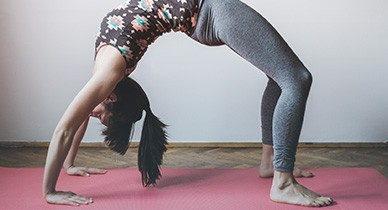 When we think about back pain, common wisdom often says that is a sign that we need to take it easy. Maybe we’ve been working ourselves too hard, or accidentally overexerted yourself trying to lift something. However, what you may not realize is that beyond the short-term, you may actually be doing more harm than good. If you are looking to deal with your back pain beyond a few days, you need to try and implement some exercise into your routine. Read on to learn how to start off, as well as what exercises are matches for certain pains.
When we think about back pain, common wisdom often says that is a sign that we need to take it easy. Maybe we’ve been working ourselves too hard, or accidentally overexerted yourself trying to lift something. However, what you may not realize is that beyond the short-term, you may actually be doing more harm than good. If you are looking to deal with your back pain beyond a few days, you need to try and implement some exercise into your routine. Read on to learn how to start off, as well as what exercises are matches for certain pains.
Workout or Rest?
Note that it’s not a matter of being fit or one specific trait that leads someone to back pain. One out of 10 people suffers from lower back pain, and back pain is also the number one cause of job disability worldwide. This number grows even higher in the U.S., with eight out of ten Americans dealing with lower back pain at one point in their lives.
The concept behind using active back exercises is to distribute nutrients into the disc space and soft tissues, allowing the discs, muscles, ligaments, and joints to stay healthy. This leads to a positive combination of:
- Less stiffness and weakness.
- Reduced lower back pain.
- Fewer instances of future lower back pain.
Standout Exercise Options
Before we get into your potential workout options, it’s important to note that you will want to start with a measured plan. A little pain is expected at first, especially if you don’t work out often. However, too much may set back your healing rather than promote your strength. To find a good balance, try consulting with industry experts like the Back Pain Centers of America. Combine this with your doctor’s recommendations that will be custom suited to your body and needs. Putting this advice together will let you take the driver’s seat to improving your back. While there is no set routine, one of the best options you can take is a combination of stretching, strengthening, and low-impact aerobic conditioning. Here are some general tips:
- Wear comfortable clothes that won’t bind your body.
- Do not force the body into difficult positions, remember, you are trying to keep pain-free
- Move into the stretch slowly and avoid bouncing, which may actually tear muscles.
- Stretch on a clean, flat surface that is large enough to move freely.
Here are some exercises a sample routine may include, as explained by the Mayo Clinic.
The Knee To Chest Stretch: To do this stretch, lie on your back with your knees bent and your feet flat on the floor. Using both hands, pull up one knee and press it to your chest. Tighten your abdominals and press your spine to the floor. Hold for 5 seconds. At this point, return to the starting position and repeat with the opposite leg. Return to the starting position and then repeat with both legs at the same time The Mayo Clinic recommends repeating each stretch two to three times — preferably once in the morning and once at night.
The Cat Stretch: Start by positioning yourself on your hands and knees. Slowly arch your back, as if you’re pulling your abdomen up toward the ceiling. Then, slowly let your back and abdomen sag toward the floor. Return to the starting position. Repeat this three to five times twice a day.
The Lower Back Rotational Stretch: Lie on your back with your knees bent and your feet flat on the floor. Keeping your shoulders firmly on the floor, roll your bent knees to one side. Hold this stance for five to 10 seconds. Return to the starting position. Repeat on the opposite side. Try to repeat each stretch two to three times — preferably once in the morning and once at night.
If some of these stretches sound familiar to you, you may be a yoga fan, and there may be a reason for that. Yoga and pilates are among some of the most recommended exercises for people with back pain, targeting abdominal muscles and other areas that strengthen the back without being overly intensive. As a bonus, you can keep fit by holding to these routines even after your back pain starts to go away.
A doctor will often recommend that you combine some dietary changes and perhaps even some dietary supplements to get the best out of your workout. If you are looking for some places to start, calcium (from dairy and leafy green vegetables), vitamin D and K2 are some of the best options.

